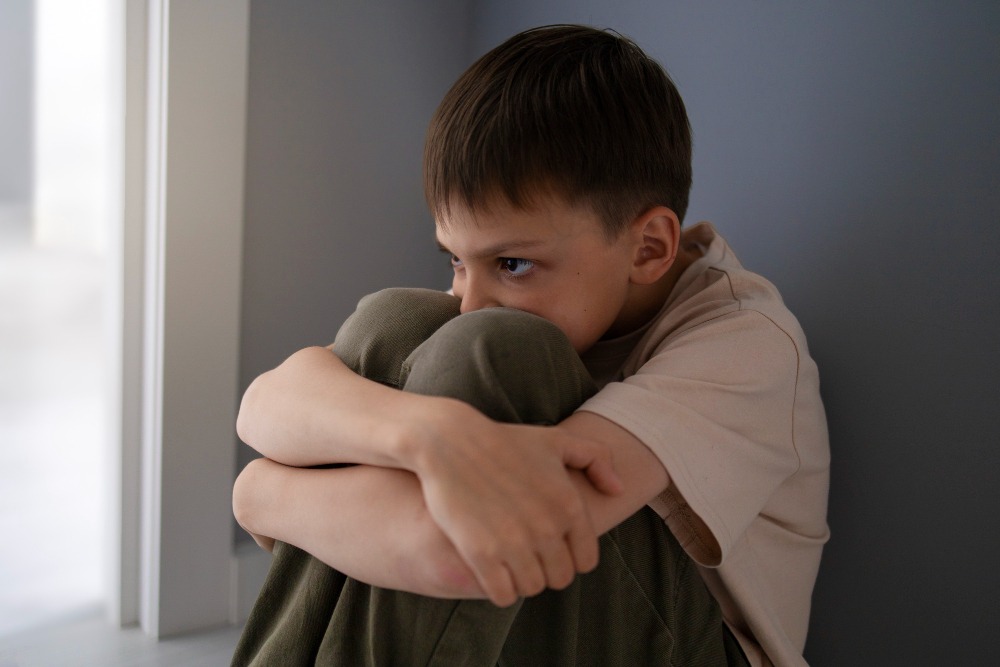INTRODUCTION
Grief is a normal reaction to loss and affects people of all ages. However, helping youngsters comprehend and cope with loss can be very difficult. Children, unlike adults, may lack the emotional vocabulary and maturity to adequately process their feelings, resulting in distinct expressions of sadness. In this comprehensive book, we will look at how children feel loss, practical ways for supporting them, and the significance of leading them through the mourning process with compassion and empathy.

Understanding Children’s Grief
Grief manifests differently in children compared to adults. While adults may experience intense emotions and express them openly, children often experience grief in waves and may not exhibit immediate signs of mourning. Here are some key aspects of children’s grief:
- Developmental Stages: Children’s understanding of death and loss evolves with their age and developmental stage. Young children may not fully grasp the permanence of death, while older children may have a deeper understanding.
- Behavioral Changes: Grieving children may exhibit changes in behavior, such as withdrawal, irritability, aggression, or regression in developmental milestones.
- Physical Symptoms: Grief can also manifest physically in children, leading to changes in appetite, sleep disturbances, and headaches.
- Grief Triggers: Children may experience grief triggers that evoke memories of the loss, such as anniversaries, holidays, or specific places and objects.
Practical Strategies for Supporting Grieving Children
Supporting children through grief requires patience, understanding, and tailored approaches to meet their unique needs. Here are some effective strategies for helping kids cope with loss:
1. Open Communication:
Encourage children to express their feelings and ask questions about the loss. Use age-appropriate language to explain the situation and answer their queries honestly.
2. Offer Reassurance:
Grieving children may experience feelings of guilt or fear. Reassure them that their emotions are normal and that they are not to blame for the loss.
3. Create a Safe Space:
Provide a safe and supportive environment where children feel comfortable sharing their thoughts and emotions. Validate their feelings and offer comfort without pressuring them to talk.
4. Maintain Routine:
Keeping a consistent daily routine can provide a sense of stability and security for grieving children. Structure helps them navigate the uncertainty of loss.
5. Encourage Expression:
Children may find it easier to express their emotions through creative outlets such as drawing, writing, or playing. Encourage these activities to help them process their feelings.
6. Offer Physical Comfort:
Physical touch, such as hugs or holding hands, can provide emotional reassurance and comfort to grieving children.
7. Seek Professional Support:
If a child’s grief is prolonged or significantly interferes with their daily life, consider seeking support from a counselor or therapist experienced in childhood grief.
Coping with Specific Types of Loss
The way children cope with loss may vary depending on the relationship and nature of the loss. Here are some considerations for specific types of loss:
- Loss of a Parent: This can be one of the most challenging losses for a child. Offer consistent support and seek professional help if needed.
- Loss of a Sibling: Grieving the loss of a sibling can be complex, as the child may experience guilt, anger, or confusion.
- Loss of a Grandparent: The loss of a grandparent can be significant, especially if they played an active role in the child’s life. Celebrate the grandparent’s memory through shared stories and traditions.
- Loss of a Pet: Pets are often considered family members, and their loss can be deeply impactful on a child. Allow the child to mourn and remember the pet through pictures or a memorial.
The Role of Rituals and Traditions
Rituals and traditions can provide structure and meaning to the grieving process for children. Whether it is a memorial service, a special tribute, or a family gathering to share memories, these practices offer children a way to connect with their emotions and the loved one they lost.
CONCLUSION
Grieving is a distinct and unique experience, especially for children. By creating a caring, empathetic, and patient atmosphere, we can assist children in navigating the complexity of loss and sorrow. Remember that each child’s experience with sorrow is unique, and there is no one-size-fits-all solution. Understanding children’s developmental stages, being open to communication, and obtaining professional help when necessary can help them heal and discover resilience in the face of loss.




